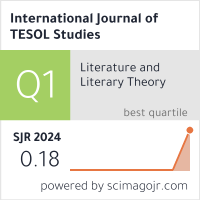2632-6779 (Print)
2633-6898 (Online)


Scopus
Ulrich’s Periodicals Directory (ProQuest)
MLA International Bibliography
MLA Directory of Periodicals
Directory of Open Access Journals (DOAJ)
QOAM (Quality Open Access Market)
British National Bibliography
WAC Clearinghouse Journal Listings
EBSCO Education
ICI Journals Master List
ERIH PLUS
CNKI Scholar
Gale-Cengage
WorldCat
Crossref
Baidu Scholar
British Library
J-Gate
ROAD
BASE
Publons
Google Scholar
Semantic Scholar
ORE Directory
TIRF
China National Center for Philosophy and Social Sciences Documentation
Qiang Zhang
Zhejiang Normal University, China
Zhejiang Pinghu High School, China
Abstract
This study aims to apply collaborative writing to the teaching practice of continuation tasks. More specifically, it attempts to explore: 1) The differences between texts produced by pairs and those finished by individuals; 2) The characteristics of collaborative dialogues during the co-authoring process; and 3) Students’ attitudes towards the use of collaborative writing in continuation tasks. The collected data indicated that collaborative writing had a positive impact on the English continuation task of senior high school students, and that the effect of interactive alignment noticed in continuation tasks was greatly highlighted in the process of collaborative continuation. The analysis of the collaborative dialogues produced evidence that pair work offers students the chance to co-construct texts, pool their language and idea resources, and thus complete more linguistically complex and grammatically accurate texts. According to the survey of students’ perceptions to collaborative continuation tasks, most of the students in the study had a positive attitude to their collaborative writing experience despite some reservations. Finally, pedagogical implications for adopting collaborative continuation are provided based on the study.
Keywords
Collaborative continuation, collaborative dialogues, co-authoring process, interactive alignment